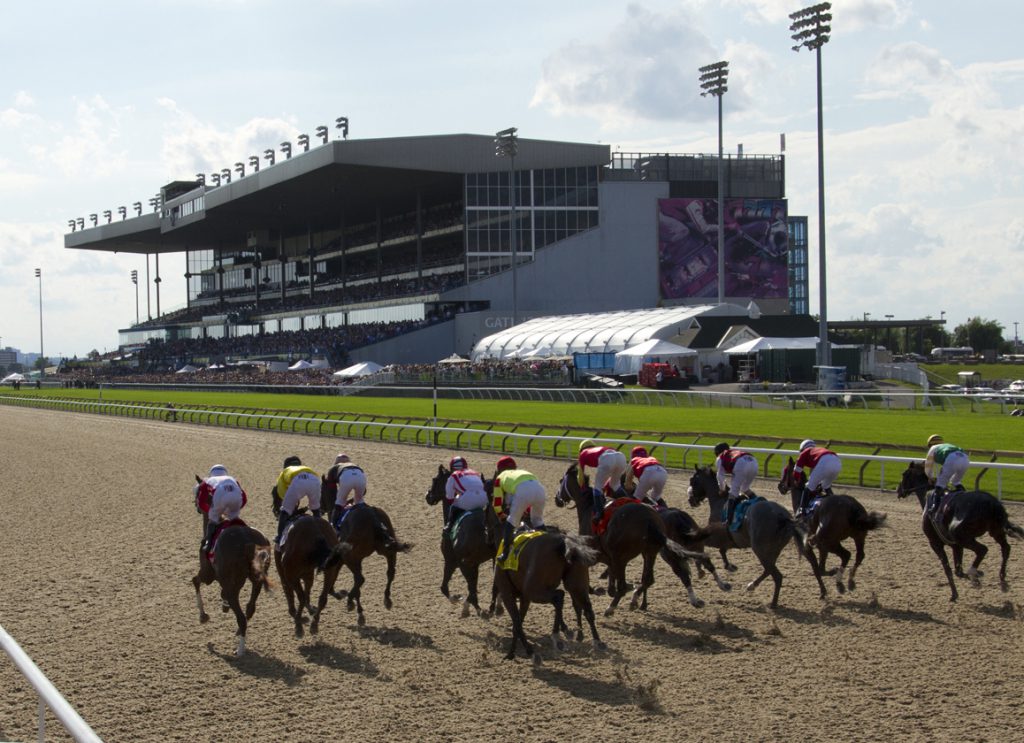It's the meet that keeps getting bigger, richer and better every year. During the seven days of racing that makes up the Kentucky Downs meet, there will be 11 stakes races worth at least $1 million and it looks like the all-turf establishment is on track to set another handle record. How has Kentucky Downs done it? Ted Nicholson, the track's vice president of racing joined the TDN Writers' Room Podcast presented by Keeneland to talk about one of the sport's great success stories. He was this week's Green Group Guest of the Week.
With so much money available for purses and with such a short meet, some wonder why Kentucky Downs doesn't add race days? Nicholson said the main reason for not doing so is to make sure the turf course is not overused.
“What's obviously on everybody's mind these days is safety,” Nicholson said. “So, if I added a day, it would have to be a day where it would be almost like a spare day. Because the reality is we run 75 races over a turf course and we have three lanes. That means you're running an average of 25 races on each lane. That's a lot of pounding. I've got the best turf guy in the business with Butch Lehr, who was at Churchill for 45 years. But even Butch would shake his head and say, 'no, I wouldn't do it.' I think we're going to be at seven days for a little while until I can figure out how I can add a fourth lane.”
Kentucky Downs has always been known for having one of the lowest takeouts in the sport, so it came as a surprise when it announced that the takeout was going to be increased by one percent in all pools this year. The horseplayers weren't happy.
“It wasn't an easy decision and it wasn't made in a vacuum,” Nicholson said. “The decision was really a tough one and the reason behind it was that I had to find a way to find some revenue. It's great to have great big purses and we had a record handle last year. But when you're running only for two weeks, you have an inordinate amount of expenses to put on a temporary show. I have a lot of tents, I have a lot of temporary expenses. I have 60 people that live here temporarily, which means I put them up in hotels to pull off this show for two weeks or three. They're here typically for three weeks. So, I have a lot of expenses. They're all going up. Even the people that you see in between the races, those folks that are on the turf and they're tamping down those divots. Those folks used to work for $10 an hour. Now it's $25. So, you can see where my expenses have gone. On top of that, you we got a bill from HISA for $650,000 for a seven-day race meet. Before I was paying the state of Kentucky $48,000 for the same exact thing. Because our expenses have been skyrocketing, I felt like had to go a little higher.”
Will Kentucky Downs ever erect a grandstand? It's unlikely.
“I can't tell you many times people have said to me, 'I love this atmosphere, so don't ever change it,'” Nicholson said. “When it comes to putting up a grandstand, I think would change the genuine feel of of what Kentucky Downs is really all about. I think people love the ability to just pull up and tailgate at the top of the stretch or pull out their folding chairs and set up on the rail. That's the essence of what this place is. We want to try to improve every year, but not lose the real true essence of what this place is all about.”
Elsewhere on the podcast, which is also sponsored by the Pennsylvania Horse Breeders Association, Kentucky Thoroughbred Owners and Breeders, WinStar Farm, XBTV.com, Stonestreet Farms, Lane's End and https://www.threechimneys.com/ West Point Thoroughbreds, the team of Zoe Cadman, Bill Finley and Randy Moss reviewed the Saratoga meet, touching on what went wrong, what went right and the changes that may be coming to the upstate New York track. Those changes include moving the 2024 and 2025 GI Belmont S. to Saratoga while Belmont Park is being rebuilt and installing a synthetic track that would complement the dirt track and the two turf courses. Also, the team looked back at the GI Pacific Classic, won by Arabian Knight (Uncle Mo), as well as the 32-day suspension handed down to Del Mar rider Antonio Fresu for whip violations.
Click here to view the podcast video or here to listen to the audio version.
The post Kentucky Downs VP Of Racing Ted Nicholson Joins TDN Writers’ Room appeared first on TDN | Thoroughbred Daily News | Horse Racing News, Results and Video | Thoroughbred Breeding and Auctions.

